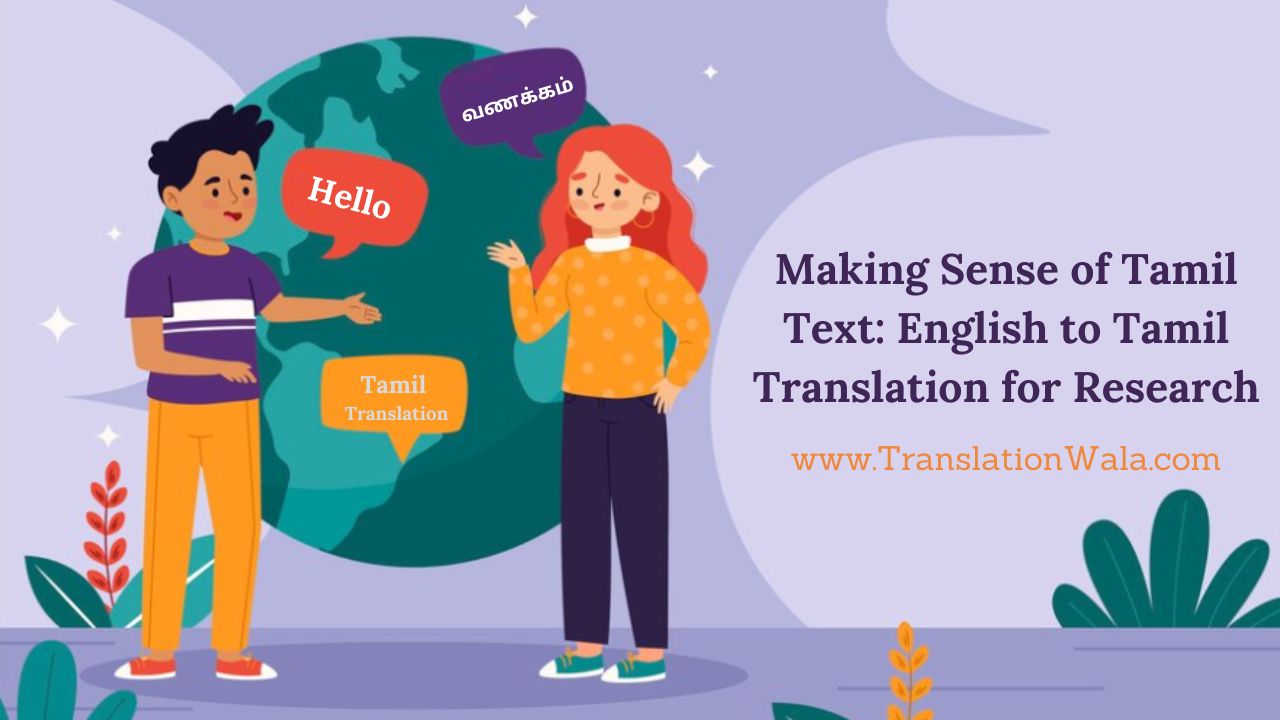English to Tamil Translation: There is a big problem for many students who want to learn more about Tamil: the language difference between English and Tamil. There is a lot of useful information in the Tamil books, but it can be hard to find and use them. There is a lot of information in this paper about how to transfer from English to Tamil for school. It tells you how to bridge the gap and find the good things in Tamil writing that are hidden away.
Understanding the Landscape:
Tamil is a very old language that has been written down for a very long time. It has its own language and way of life. It is different from Indo-European languages like English because it has Dravidian roots and a unique grammar structure. This means that translating it needs to be done with care. You should be aware of these changes to make sure that your study records are correct and useful.
Challenges and Considerations:
The brave researcher who tries to English to Tamil Translation will face a number of major problems:
- Technical Terminology: There are often their own slang and technical terms used in specialized academic areas. To translate these ideas correctly into Tamil, you need to know a lot about both languages and the subject. Subject-specific texts and talking to experts in the field can be very helpful.
- Cultural Nuances: A lot of the time, direct readings miss the minor culture differences that are built into language. A translator has to be aware of these subtleties and find words and phrases that will work for the target audience without changing the meaning of the original.
- Literary Devices: Tamil literature is known for having a lot of different types of puns, similes, and other writing techniques. To successfully translate these parts, you need to be creative and know how you want the reader to feel. If you translate something literally, it might lose some of its meaning and images.
- Register and Style: What kind of voice and style to use for the translation depends on who it’s for and why. When writing for school, you need to use a serious tone, but when translating for social materials, you might need to use a more casual tone.
- Accuracy and Fluency: It is very important to find a mix between correctness and ease. It is very important to stay true to the original text, but it is also very important that the translated text flows easily in Tamil.
Also Read: Bridging Cultural Connections: English to Telugu Translation for Personal Interactions
Strategies for Success:
Once researchers are aware of the problems, they can use a number of methods to make sure their English to Tamil versions work well for their research:
- Collaboration: Working with a professional translator who is fluent in both languages and the study field in question can make the translation much more accurate and useful.
- Machine Translation Tools: There are some things that machine translation tools can’t do, but they can help you make first drafts or get the main idea of a text. But depending on them alone is dangerous, and people need to be involved for truth and subtlety.
- Glossary Development: For stability and easy reference during the translation process, making a list of important words and their Tamil versions can be very helpful.
- Feedback and Iteration: You can make sure that the translated text hits home with the intended audience and correctly explains the meaning by getting comments from native Tamil speakers who are experts in the study field. To get a good translation, you need to make changes based on comments over and over again.
Beyond Translation:
That being said, you need to do more than just word-for-word readings to really understand Tamil writing. you read, watch, and learn Tamil, the more you’ll understand about its history, background, and different forms. It can also help you learn a lot and study better to talk to Tamil experts and read secondary sources written in Tamil.
Conclusion:
To get to the wealth of information in Tamil books, you have to figure out how English to Tamil Translation. Using helpful methods, and pushing people to learn more about the language and culture are all things that researchers can do to cross the language gap and improve their work. Don’t forget that reading Tamil text isn’t just about translating it; it’s also about starting a trip of cultural and intellectual finding that broadens your knowledge.
